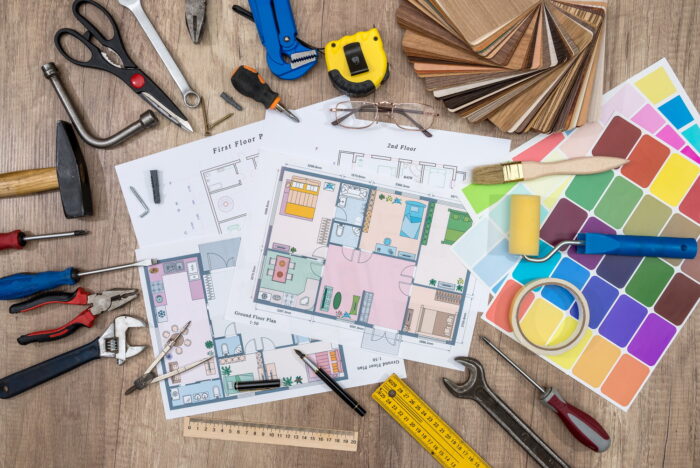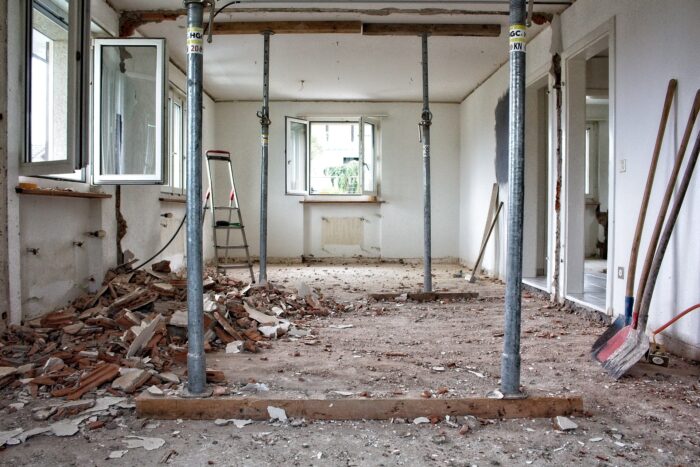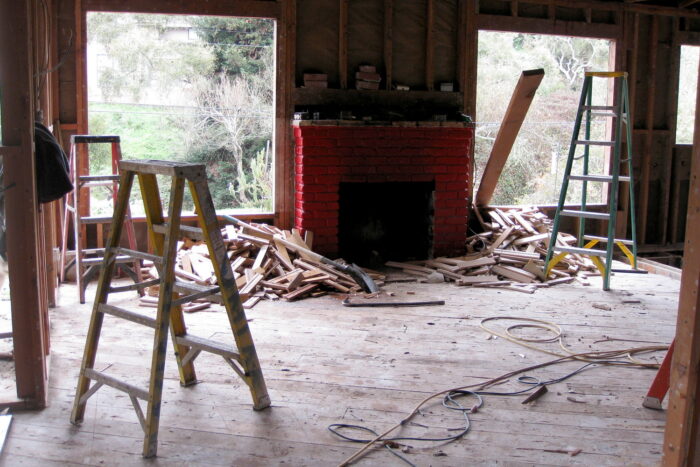A complete home makeover is like giving your house a fantastic transformation. Embarking on this exciting journey can sometimes feel a bit overwhelming due to its vast scope and the meticulous planning it requires.
However, the resulting rewards are unquestionably worth the effort. Renovating your entire home might become a crucial step in increasing the property’s value for a future sale.
Alternatively, it could be aimed at making your dwelling more comfortable for its present inhabitants.
Regardless of the motivation behind the full house renovation, the groundwork remains consistent: setting a budget, making a plan, and finding the right contractor, among other vital considerations.
This blog navigates the intricate journey of whole-house remodeling, from concept and design to fulfilling the dream renovation.
The Initial Concept: Exploring Ideas and Vision

Source: corinthianinc.com
When embarking on the journey of a whole-house remodel, it all begins with an idea. The initial concept is the spark that ignites the entire process, and it’s where your vision for your dream home renovation takes shape.
Imagine how you want your home to look and function once the remodel is complete. Consider the layout, the aesthetics, and the functionality.
Take inspiration from design magazines, home improvement shows, or even a stroll through your favorite neighborhood. Collect images and create mood boards to visualize your ideas.
In addition, defining the scope of your project is crucial. Determine which areas of your home need renovation, whether it’s the kitchen, bathroom, living room, or all of the above. Consider the scale of the project, including whether it’s a minor refresh or a major transformation.
Design Phase: The Role of Blueprints and Architectural Designs
The design phase is where your initial ideas start to take shape in a more structured manner.
It’s a critical stage that involves turning your vision into practical plans and blueprints, ensuring that your dream renovation is not only beautiful but also functional and safe.
The initial step in this process involves creating a well-thought-out plan that considers the practical aspects of your project. What’s your budget? What aspects take priority? Are there specific design elements you wish to incorporate?
It’s advisable to formulate a project plan outlining your objectives, timeline, and budget constraints.
It’s also a good idea to involve professionals like architects, interior designers, and structural engineers, as their expertise ensures that your design not only looks great but is also structurally sound.
In addition, contractors are the backbone of your renovation project. They bring the plans to life, manage the workforce, and oversee the project’s progress. Thus, contractor services are essential for a successful home remodel.
Budgeting and Financing Phase

Source: investopedia.com
The financial aspect of your whole-house remodel is a critical factor that cannot be overlooked. Setting a realistic budget and managing your finances effectively is crucial for the success of your project.
Setting a Realistic Budget
Determine the total budget for your renovation, keeping in mind that unexpected expenses may arise.
Allocate funds to different aspects of the project, such as materials, labor, permits, and contingency. Having a well-defined budget will help you make informed decisions and avoid overspending.
Financing Options and Cost Management
Consider how you’ll finance your remodel. Options range from personal savings to home equity loans or lines of credit.
It’s essential to explore the most suitable financing option that aligns with your budget and financial goals. Additionally, actively managing costs throughout the project is key to staying on track and within your budget.
Addressing Unexpected Expenses
No matter how well you plan, unexpected expenses can still crop up. Having a contingency fund of around 10% of your total budget can act as a safety net for unforeseen costs.
This cushion ensures that you can adapt to changes or challenges without derailing the entire project.
Understanding Local Building Codes and Regulations
Navigating the legal aspects of your whole-house remodel is an essential part of the process.
Every locality has its own set of building codes and regulations that dictate the proper conduct of construction and renovation projects. Familiarizing yourself with these rules is crucial to avoid potential legal complications and to ensure your home’s safety.
Demolition and Construction: Preparing for the Physical Work

Source: industrytap.com
Once the planning and legal matters are sorted out, it’s time to get down to the physical work of your whole-house remodel.
Before the construction phase begins, your home must be prepared for the extensive work ahead. This might include moving out temporarily, setting up a temporary kitchen or bathroom, and protecting any parts of your home that won’t be renovated.
Demolition is the phase where existing structures are removed or altered to make way for the new design.
Final Touches and Details
As your whole-house remodel nears completion, it’s the perfect time to add those personal touches and ensure that every detail is just right.
What truly sets your home apart is the personal touch you infuse into it.
Whether it’s custom cabinetry, unique lighting fixtures, or decorative elements, these are the details that truly make your home uniquely yours. You can also consider incorporating energy-efficient and sustainable elements in your renovation.
Conclusion

Source: houselogic.com
The journey from concept to completion in a whole-house remodel is a rewarding experience.
Remember that the guidance of professional contractors, sound budgeting, adherence to regulations, and a focus on detail are key to a successful home renovation journey. So, take that first step towards your dream home, and enjoy the process.
Table of Content




